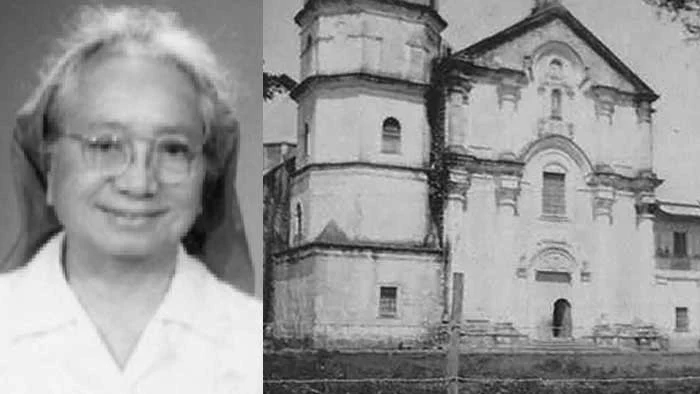The First Filipina Maryknoll Sister was from Lipa, Batangas
Readers who live in or close to the City of Lipa in the Province of Batangas will be well aware of the existence of the school called Canossa Academy, owned and operated by the Canossian Daughters of Charity, Servants of the Poor. The latter is a religious order that was founded in 1808 in the City of Verona, Italy1.
What will be less known, excepting, perhaps, those associated with the school and some of the city’s elderly population, is that the school traces itself to an institution called Our Lady of the Rosary Academy, formerly operated by the Maryknoll Sisters of St. Dominic.
This religious order was founded in 1912 in the United States and is considered “the first United States based congregation of women religious founded in the early 20th century for foreign mission work2.”
This “foreign mission work” would include the operation of schools in the Philippines. In the year 1924, the Irishman Michael J. O’Doherty, the 27th Archbishop of Manila3, opened a normal school — a school for the training of teachers — in what was then still the Municipality of Malabon.
He also invited the Maryknoll Sisters to send personnel to the Philippines to administer the school. Initially, seven nuns were sent by the order, and by June 1926, the normal school began its operations4.
The sisters were successful in their initial undertakings and began to expand their missionary work in the country. This included the opening and operation of schools in, among others, Baguio, which was still part of what then the sub-province of Benguet; Santiago, Isabela; Lucena, Tayabas5; Pakil in Laguna; and Lipa in Batangas6.
As mentioned, this school in Lipa was called the Our Lady of the Rosary Academy. By the time the Maryknoll Sisters turned over operations of the school to the Canossian Sisters in the late 1960’s, by which time their missionary work in the city was said to have been completed, the congregation in the country was made up of both Americans as well as Filipino nuns.
The distinction of being the first-ever Filipina to have been accepted into the order went to Sister Maria Concepcion Kalaw, originally of the City of Lipa. She was born Dolores Katigbak Kalaw on 9 March 1904 to Cipriano Kalaw and the former Feliza Africa Katigbak.
Both surnames elicit respect in the city. Her father, in particular, was not only among the advisers of General Miguel Malvar, he also acted as the Treasurer of the so-called Hong Kong junta organized by General Emilio Aguinaldo. Her mother, on the other hand, belonged to one of the oldest and most respected clans in the city7.
Before becoming a nun, Sister Maria Concepcion was employed at the University of the Philippines as a Chemistry lab assistant. She also lectured in two subjects, Chemistry and Bacteriology, at the Philippine Women’s University.
Upon realizing her vocation, she joined the Maryknoll congregation on 16 July 1930. After presumably pursuing further studies and obtaining training in the United States for their missionary work, she would return to the Philippines in 1934 where she would be assigned at what was then the Municipality of Lucena.
There, she was said to have been “devoted to her classes but also to the betterment of the people of the barrio8.” In all, she would devote 41 years of her life as an educator and as a tireless and devoted worker in many of her religious congregation’s many ministries.
She would pass away on 19 July 1973 at what may be considered a relatively “young” age of 69. There would be other Filipinas who would join the Maryknoll Sisters but the distinction of being the first will always belong to Sister Maria Concepcion Kalaw.
2 “History (of the Maryknoll Sisters),” online at Maryknoll Sisters.
3 “Michael J. O’Doherty,” Wikipedia.
4 “Maryknoll Sisters in the Philippines,” by Fr. Miguel A. Barnard, SJ, published 8 August 2005, online at the Philippine Star.
5 Presently the Province of Quezon.
6 Barnard, op. cit. 7 “Sr. Maria Concepcion Kalaw: First Filipina Maryknoll Sister,” published 8 April 2021, online at The Wise Friar.
8 Ibid.

